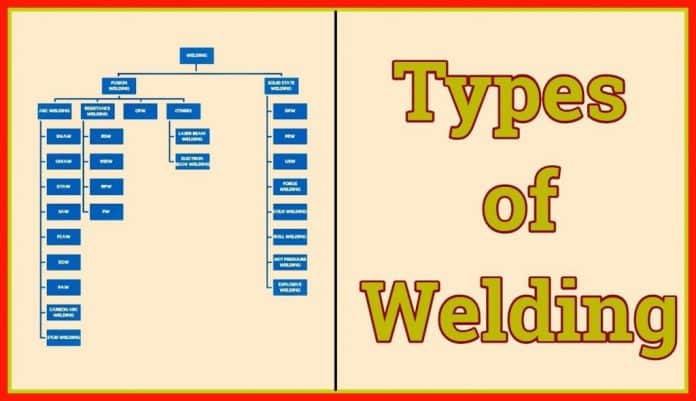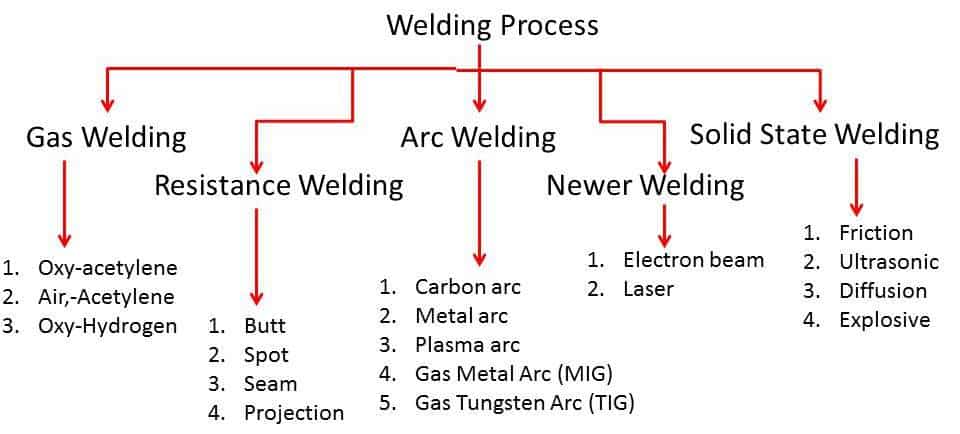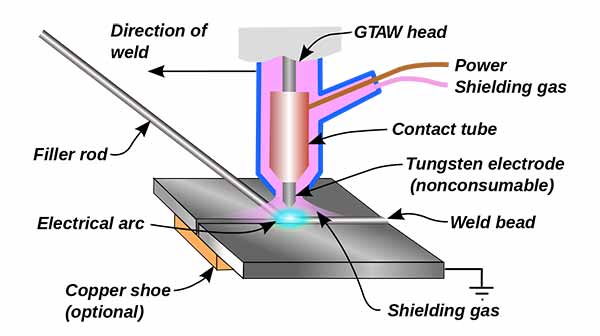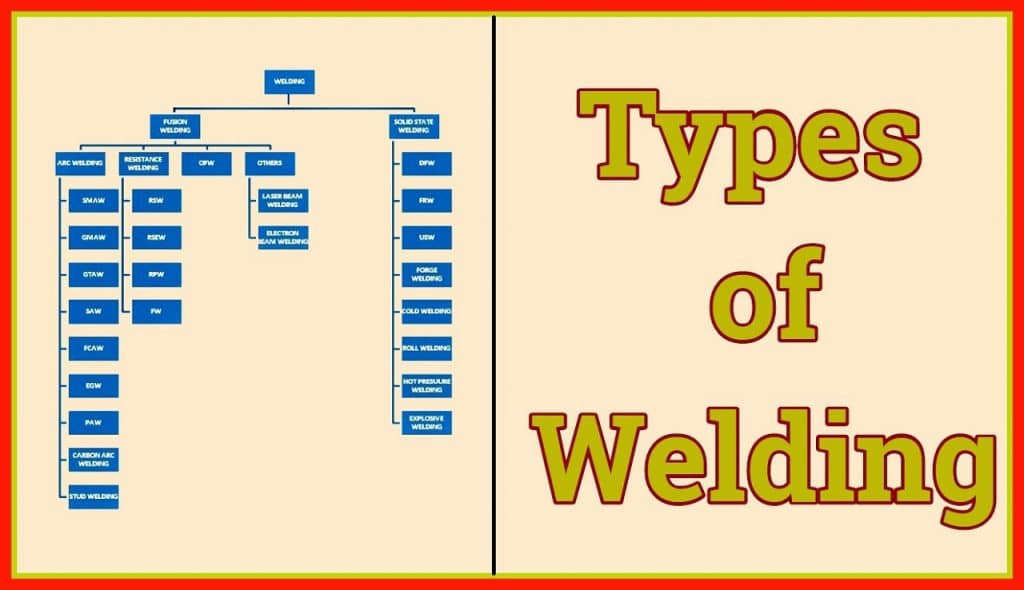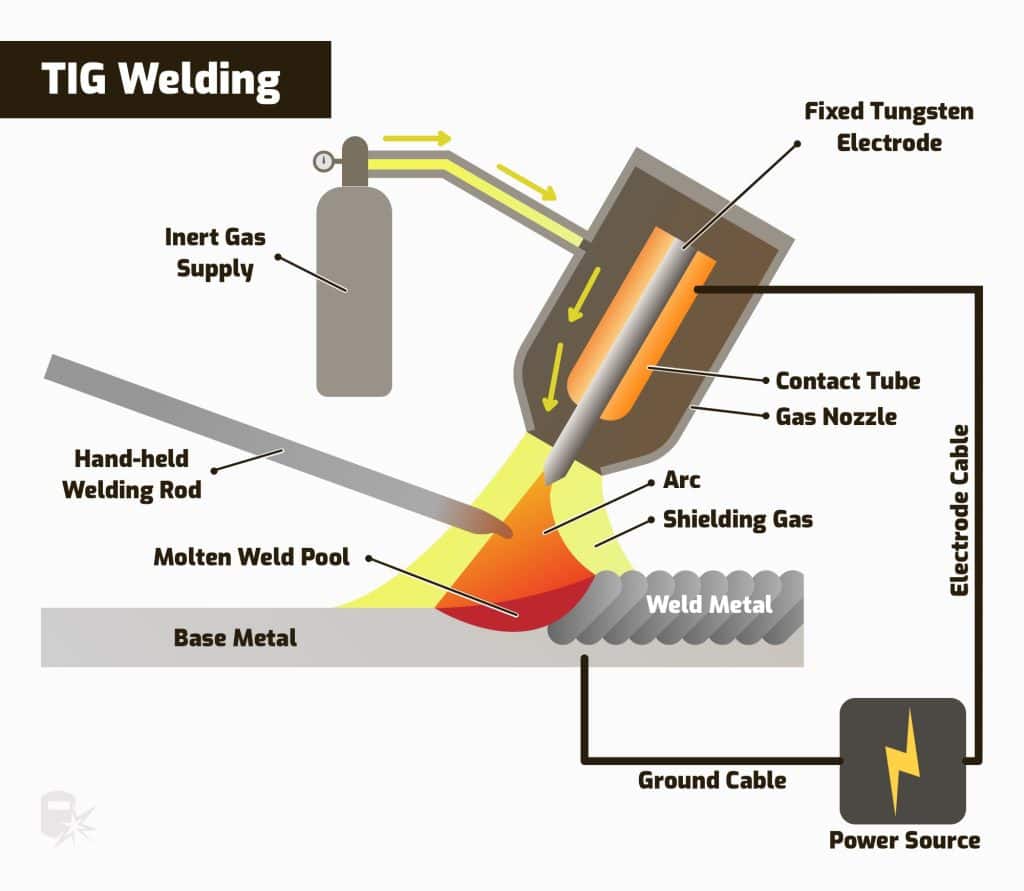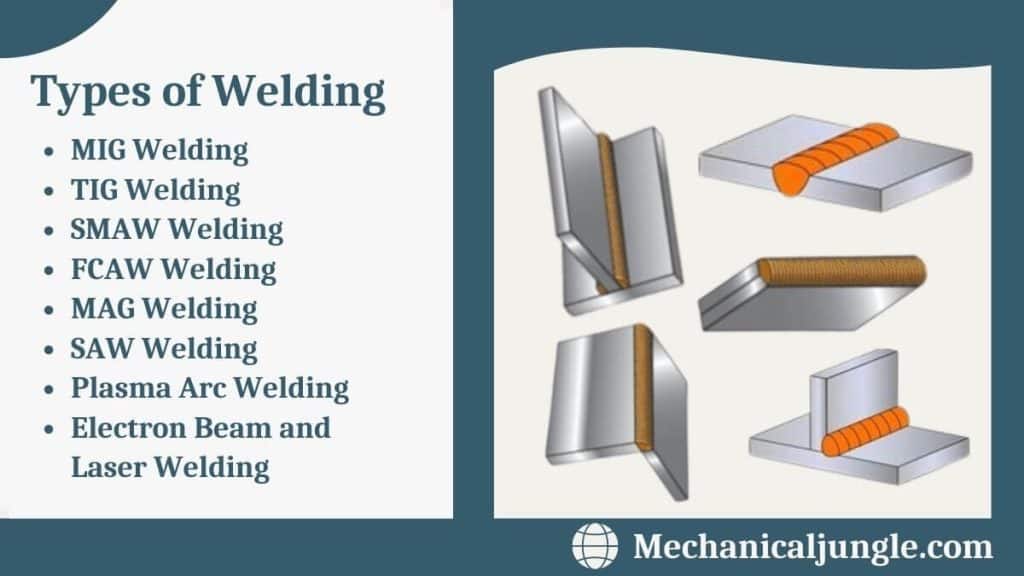In this article, we’ll explore the fascinating world of welding and uncover the various types of processes involved. From the familiar techniques like arc welding, MIG welding, and TIG welding to lesser-known methods such as flux-cored arc welding and laser welding, we’ll take you on a journey through the wide range of options available for joining metal pieces together. Whether you’re a welding enthusiast or simply curious about this versatile skill, this article is sure to provide valuable insights into the captivating realm of welding processes.
Review contents
Arc Welding
Arc welding is a versatile and widely used welding process that utilizes an electric arc to join metal components together. There are several different methods within the arc welding category, each with its own unique characteristics and applications. In this article, we will explore the various types of arc welding processes, including Shielded Metal Arc Welding (SMAW), Gas Metal Arc Welding (GMAW), Flux-Cored Arc Welding (FCAW), and Gas Tungsten Arc Welding (GTAW).
Shielded Metal Arc Welding (SMAW)
One of the oldest and most commonly used arc welding processes is Shielded Metal Arc Welding, also known as SMAW or stick welding. This method utilizes a consumable electrode coated with a flux that releases a shielding gas when the electrode melts. The flux helps to protect the weld from contaminants and impurities in the atmosphere, resulting in a strong and durable weld.
SMAW is a versatile process that can be used on a wide range of materials, including steel, stainless steel, cast iron, and non-ferrous metals. It is often chosen for its simplicity and affordability, as it requires minimal equipment and can be performed in various positions, making it suitable for both indoor and outdoor applications.
Gas Metal Arc Welding (GMAW)
Gas Metal Arc Welding, or GMAW, is a popular arc welding process that uses a continuous solid wire electrode and a shielding gas to create the arc. The continuous wire feed enables high welding speeds, making GMAW particularly efficient for large-scale production or projects that require quick turnaround times.
GMAW offers excellent control over the welding process, allowing for precise and consistent welds. It can be used on a wide range of materials, including carbon steel, stainless steel, aluminum, and copper alloys. This versatility, coupled with its speed and ease of use, has made GMAW a preferred choice in various industries, such as automotive, construction, and manufacturing.
Flux-Cored Arc Welding (FCAW)
Flux-Cored Arc Welding, or FCAW, is a variation of GMAW that utilizes a tubular wire filled with a flux compound instead of a solid wire electrode. The flux provides a shielding gas when heated, protecting the weld from impurities and contaminants. FCAW is known for its high deposition rates and ability to weld thicker materials, making it suitable for heavy-duty applications.
FCAW can be divided into two categories: self-shielded and gas-shielded. Self-shielded FCAW does not require an external shielding gas, as the flux within the wire produces its own gas. This makes it ideal for outdoor welding or situations where a shielding gas may not be practical. Gas-shielded FCAW, on the other hand, relies on an external shielding gas to protect the weld.
Gas Tungsten Arc Welding (GTAW)
Gas Tungsten Arc Welding, commonly known as GTAW or TIG welding, is a precise and highly versatile arc welding process that uses a non-consumable tungsten electrode and a shielding gas. GTAW produces clean and high-quality welds with minimal spatter, making it ideal for applications that require aesthetic appeal and precise control.
GTAW can be used on a wide range of materials, including stainless steel, aluminum, titanium, and nickel alloys. It offers excellent control over heat input, allowing for precise welds on thin materials or intricate workpieces. GTAW is commonly employed in industries such as aerospace, electronics, and artistry.
Resistance Welding
Resistance welding is a group of welding processes that join metal components by applying pressure and heat generated from passing an electric current through the materials. This category includes spot welding, seam welding, and projection welding.
Spot Welding
Spot welding is a resistance welding process that creates a series of overlapping spot welds to join two or more metal sheets together. It is commonly used in the automotive industry for joining sheet metal components, such as body panels and frame structures. Spot welding is known for its speed and efficiency, as it can create strong and durable welds in a matter of seconds.
Seam Welding
Seam welding is a resistance welding process similar to spot welding, but instead of creating individual spot welds, it forms a continuous weld along the length of the joint. It is often used for joining cylindrical or tubular components, such as fuel tanks and pipes. Seam welding provides a leak-tight and structurally sound weld, making it suitable for applications that require hermetic seals or pressure containment.
Projection Welding
Projection welding is a resistance welding process that uses specially formed projections on one or both workpieces to concentrate the heat and pressure at specific points. This allows for efficient and consistent welding without the need for additional fixtures or clamping. Projection welding is commonly used for joining components with complex geometries or dissimilar materials, such as electrical contacts, fasteners, and automotive parts.
This image is property of tristatefabricators.com.
MIG Welding
MIG welding, also known as Gas Metal Arc Welding (GMAW), is an arc welding process that uses a continuous consumable wire electrode and a shielding gas to create the arc. It offers high welding speeds and deposition rates, making it suitable for a wide range of applications.
Globular Transfer
In globular transfer mode, the molten metal transfers from the electrode to the workpiece in large droplets. This mode is typically used for welding thicker materials and results in a larger weld bead. While it offers good penetration and deposition rates, it may require more post-weld cleaning due to increased spatter.
Spray Transfer
Spray transfer mode produces a fine spray of metal droplets that transfer from the electrode to the workpiece in a controlled manner. This mode provides excellent fusion and high-quality welds with minimal spatter. Spray transfer is commonly used for welding thinner materials or when a high level of control and weld aesthetics is required.
Pulsed-Spray Transfer
Pulsed-spray transfer is a variation of spray transfer that uses pulses of current to control the heat input and droplet transfer. This mode offers even greater control, especially when welding thin materials or when welding dissimilar metals that have different thermal conductivities. Pulsed-spray transfer produces clean and precise welds with little distortion.
TIG Welding
We’ll cover Tungsten Inert Gas (TIG) welding, also known as Gas Tungsten Arc Welding (GTAW), where a non-consumable tungsten electrode and a shielding gas are used to create the arc.
Direct Current (DC)- Tungsten Inert Gas (TIG)
DC TIG welding is the most commonly used configuration for TIG welding. It uses a direct current power source, where the negative terminal is connected to the tungsten electrode and the positive terminal is connected to the workpiece. This setup allows for excellent control over the heat input and penetration, making it suitable for a wide range of materials and thicknesses.
Alternating Current (AC)- Tungsten Inert Gas (TIG)
AC TIG welding is used when welding materials that have an oxide layer, such as aluminum and magnesium. The alternating current causes the oxide layer to be removed in one half of the cycle and allows for the formation of a clean weld in the other half. AC TIG welding is commonly used in the automotive, aerospace, and marine industries.
This image is property of www.cruxweld.com.
Plasma Arc Welding (PAW)
Plasma Arc Welding (PAW) is a precise and versatile arc welding process that uses a constricted plasma arc to generate the heat required for welding. PAW offers high energy densities, enabling deep weld penetration and fast welding speeds. It is commonly used for welding thin materials, as well as for welding materials that require high-quality and precise welds, such as aerospace components and medical devices.
Laser Beam Welding (LBW)
Laser Beam Welding (LBW) is a fusion welding process that uses a highly concentrated laser beam to create a weld. The laser beam provides a high energy density, resulting in a narrow and deep penetration weld. LBW offers excellent control over heat input and can be used to weld a wide range of materials, including metals and non-metals. It is commonly used for precision welding in industries such as automotive, aerospace, and electronics.
This image is property of www.weldingandndt.com.
Electron Beam Welding (EBW)
Electron Beam Welding (EBW) is a fusion welding process that uses a high-velocity electron beam to generate the heat required for welding. EBW offers deep penetration and narrow welds, making it suitable for welding thick sections and dissimilar materials. It is commonly used in the aerospace and automotive industries, as well as in medical device manufacturing.
Friction Welding
Friction Welding is a solid-state welding process that joins two workpieces by generating heat through friction. The heat softens the materials, and the axial force forges them together, resulting in a strong and durable weld. Friction welding can be performed with various methods, including rotary friction welding, linear friction welding, and friction stir welding. This process is commonly used for joining materials with different properties or dissimilar metals.
This image is property of weldguru.com.
Oxyfuel Gas Welding (OFW)
Oxyfuel Gas Welding (OFW) is a welding process that uses a fuel gas and oxygen to produce a flame for heating and melting the materials to be joined. OFW is commonly used for welding and cutting applications, as it offers portability and versatility. It can be used on a wide range of materials, including steel, cast iron, and non-ferrous metals. OFW is often employed in industries such as construction, automotive repair, and plumbing.
Conclusion
Welding is a vital process that plays a crucial role in various industries, from manufacturing and construction to automotive and aerospace. In this article, we have explored several types of welding processes, including Arc Welding, Resistance Welding, MIG Welding, TIG Welding, Plasma Arc Welding, Laser Beam Welding, Electron Beam Welding, Friction Welding, and Oxyfuel Gas Welding.
Each welding process offers unique advantages and characteristics, making them suitable for specific applications and materials. Whether it’s SMAW for its simplicity and affordability, GMAW for its speed and precision, or TIG welding for its aesthetic appeal and control, there is a welding process available for every welding task.
By understanding the different types of welding processes and their applications, we can make informed decisions and utilize the most suitable welding method for our specific needs. With proper training, equipment, and safety measures in place, we can confidently join metal components together and contribute to the creation of strong and reliable structures and products.
This image is property of mechanicaljungle.com.

